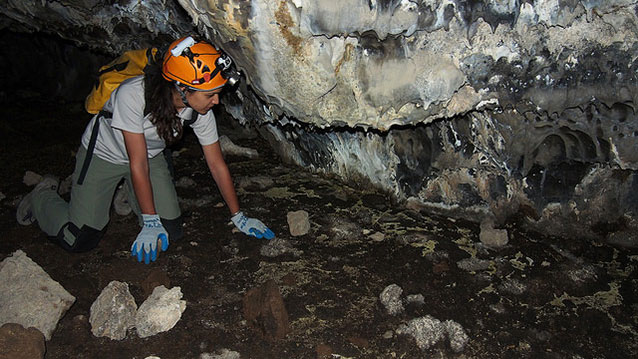
NPS Photo
2016 has been an exciting year for the National Park Service (NPS). We’ve taken some time to reflect on the first 100 years of stewardship. We set aside a day to celebrate on August 25, the anniversary of the Organic Act that brought the NPS into being. And now we get to ride that wave of enthusiasm and rejuvenation into our second century.
The Natural Resource Stewardship and Science Directorate (NRSS) provides key scientific support and expertise to the NPS. Our work seeks to conserve and preserve all of the wonders of nature in our parks—from wildlife to scenic vistas, from night skies to rare fossils, from oceans to the desert saguaro. To do this successfully and sustainably, we approach this mission scientifically so resource managers in parks, and our partners in and around parks, have the best, most up-to-date information available to make decisions.
Protecting our natural areas begins with strong science.
I’m looking forward to both the near future and long-term future of science and natural resource conservation in our parks. Welcoming new scientists into our parks benefits parks specifically, but we all benefit from the body of scientific knowledge being built.
Staff in Individual parks as well as NRSS consistently advance scientific knowledge and scholarship. For example, several of our west coast parks participated in the West Coast Ocean Acidification cruise this summer, led by NOAA, that monitors ocean health along the Pacific Coast. Nine parks in the midwest hosted the American Solar Challenge this summer, supporting several teams as they raced 1,975 miles in their solar-powered vehicles. And we have a lot of opportunities for new scientists and park visitors to get involved with improving and expanding science in parks:
- Citizen Science — We can’t do this alone, but we can do so much together, as evidenced by the highly successful BioBlitz 2016. As of Aug. 24, 2016, more than 5,000 people had made more than 100,000 observations of more than 11,000 species on iNaturalist. This collaborative effort only exists because park visitors and citizens are getting involved. And the results create a tremendously valuable baseline of species that will inform future management decisions in parks and regions. We’ll regularly share other citizen science projects, too, that you can get involved in, like the Saguaro Census at Saguaro National Park or Documenting Life Cycle Changes at Great Smoky Mountains National Park.
- Science Students in Parks —As the planet faces significant ecological and environmental challenges, parks can serve as laboratories for a variety of experiments and studies. And parks benefit from the results of the studies. It’s exciting to bring in the next generation of park scientists, and we need them to become engaged for the survival of our natural areas. Some examples of programs for young scientists include the Young Leaders in Climate Change and Geoscientists-in-the-Parks. Or you can look up other programs for young scientists.
- Sharing Science — Science in parks matters, and sharing that knowledge with others matters, too. Whether we use results from our studies for making management decisions or simply to let the public know about the rich and wild world in national parks, it’s important to communicate the science we do. After all, when people learn about the natural wonders in our parks, they become more motivated to protect and conserve them.
I’m excited to build on the programs we already have—like the Outside Science (inside parks) webisode series and the fun, educational Junior Ranger programs. With all of the new media technologies and platforms, our second century is filled with new opportunities and media to share the science and keep the conversations going.
The ecological and environmental challenges we address across the NPS and here at NRSS are vast. Disruption of migration paths, ocean acidification, decrease in pollinators, and increase in light pollution are just a few of the issues affecting the NPS. I feel strongly that involving the next generation of park stewards in collaborative citizen science and communicating the importance of science in parks will help ensure that we still have the National Park Service to celebrate in 2116.
* Paperwork Reduction and Privacy Act Statement: The National Park Service is authorized by 16 U.S.C. 1a-7 to collect this information. This information collection will provide data for the National Park Service to better understand which species occur on its lands and where those species occur. Response to this request is voluntary. No action may be taken against you for refusing to supply the information requested. The permanent data will be anonymous. An agency may not conduct or sponsor, and a person is not required to respond to a collection of information unless it displays a currently valid OMB control number.
BURDEN ESTIMATE: Public reporting burden for this form is estimated to average 5 minutes per response. Direct comments regarding the burden estimate or any other aspect of this form to NPS Information Collection Clearance Officer (NPS_ICR@nps.gov)
OMB Control Number: 1024-0275
Last updated: September 21, 2016
